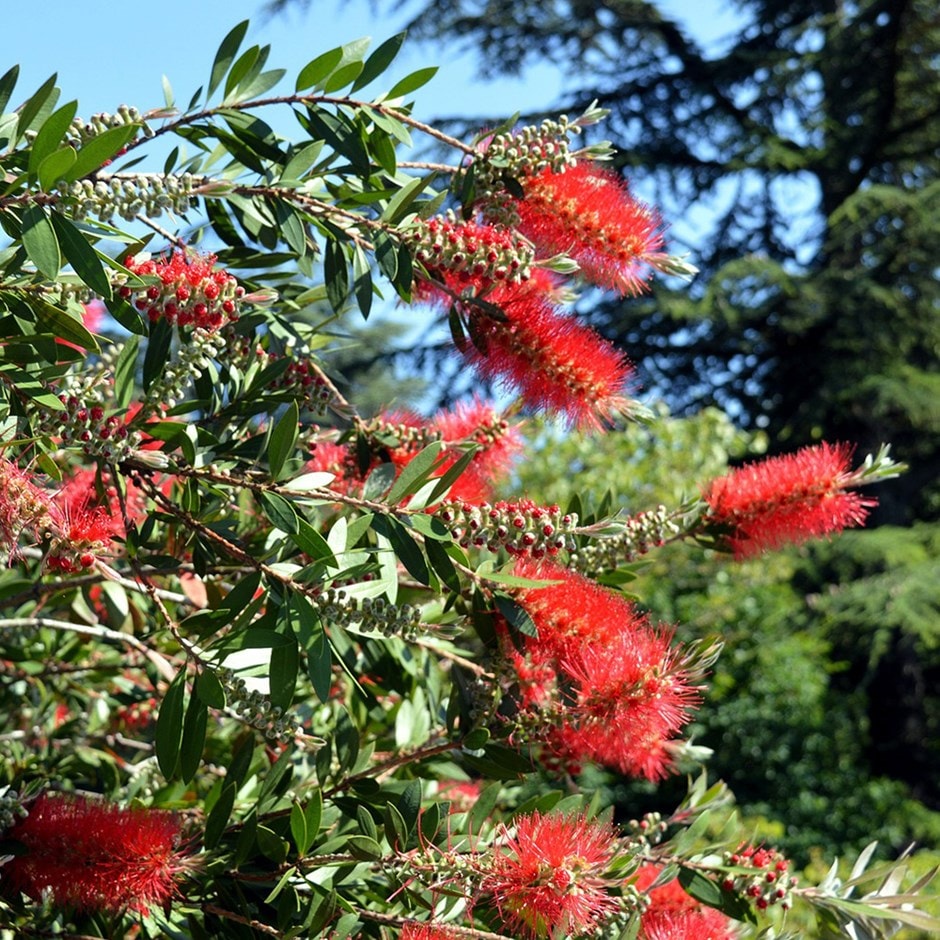Eventual height & spread
Callistemon viminalis 'Captain Cook'
bottlebrush 'Captain Cook' ( syn. Callistemon 'Captain Cook' )
- 2 litre pot
- £24.99
- available to order from autumn
Delivery options
- Standard £5.99
- Position: full sun
- Soil: humus-rich neutral to acidic soil, or ericaceous compost for containers
- Rate of growth: average
- Flowering period: April to August
- Hardiness: half hardy (will need winter protection)
A highly favoured shrubby cultivar known for its dense, evergreen foliage and striking bright red bottlebrush flowers, reaching up to 15cm (6in) in length. Blooming abundantly in both spring and summer, these vibrant spikes also serve as exceptional cut flowers.
With its compact growth, 'Captain Cook' proves versatile, fitting seamlessly into borders, low hedges, or screens, making it an ideal choice for smaller gardens. Additionally, it boasts resistance to both deer and disease, ensuring its enduring beauty in any landscape.
With its compact growth, 'Captain Cook' proves versatile, fitting seamlessly into borders, low hedges, or screens, making it an ideal choice for smaller gardens. Additionally, it boasts resistance to both deer and disease, ensuring its enduring beauty in any landscape.
Bottlebrush grows best in a sunny, sheltered spot with free-draining soil—ideally sandy or loamy. Avoid heavy, waterlogged soils, especially in winter. When planting, incorporate grit or sand to improve drainage, and position the plant where it will be protected from cold winds and frost pocket pockets. In colder areas, consider growing in a large container that can be moved under cover during winter.
Tip prune young plants regularly to encourage a bushier shape. Once established, prune immediately after flowering by cutting back spent flowered stems to strong, outward-facing shoots. Older plants can be rejuvenated gradually over two or three years by removing some of the oldest stems down to a low bud. Protect during cold spells, especially from frost and excessively wet winter conditions. Mulching with bark or gravel around the base helps conserve moisture and insulate roots.
Tip prune young plants regularly to encourage a bushier shape. Once established, prune immediately after flowering by cutting back spent flowered stems to strong, outward-facing shoots. Older plants can be rejuvenated gradually over two or three years by removing some of the oldest stems down to a low bud. Protect during cold spells, especially from frost and excessively wet winter conditions. Mulching with bark or gravel around the base helps conserve moisture and insulate roots.
Goes well with
Biofleece plastic free plant fleece - 18gsm
2m × 10m
£12.99
In stock (shipped within 2-3 working days)

